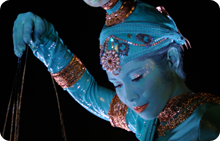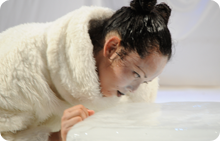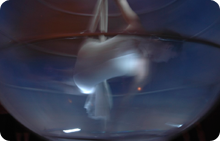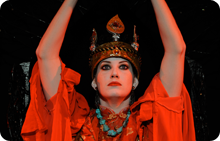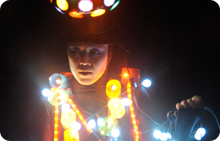MANDLOVU - ELEPHANT
THE LIVING EARTH
SUPPORTING ANIMAL RIGHTS
Artistic Director
Cheryl Flaharty
Dancer
Malia Yamamoto
Costume and Set Design
Cheryl Flaharty
Music
Jami Sieber
Lighting
Janine Myers
Production Assistant
Lynn Maire Sager
Stage Manager
Barett Hoover
Video Editing
Izumi Designs
Creative Team - Costumes & Sets
Cheryl Flaharty, Rebecca Horne, Dee Kursat, Carlyn Wolfe, Lindsey Shannon, Geneva Rivera, Peggy Hill, Rose Wolfe.
Supported by the Hawai`i State Foundation on Culture and the Arts, through appropriations from the Legislature of the State of Hawai`i or grants from the National Endowment for the Arts, the Cades Foundation, and Jean Rolles.
ABOUT THE SHOW
‘The Living Earth’ was presented in 2009 as the fifth interactive production of IONA’s diverse Salon Series. Staged at Honolulu Hale’s Sky Gate Sculpture designed by Isamu Noguchi, 'The Living Earth' wove together dance and spirituality to present a theatrical dialogue of universal concerns. The interactive performance revolved around a Cosmic Circus featuring a Living Altar of sacred statues that brought the audience through the chakras as the evening progressed. Surrounding the Circus were nine Gates of Earth Awareness performance tents designed to honor and bring awareness to the current state of the planet and human consciousness. Prior to the show, audience members chose their individual “fate,” or order in which they watched the performance evolve as they visited each of the nine Gates.
SAVING THE ELEPHANTS
Mandlovu is an African Ndebele word for elephant, and also is the name for the Great Mother. In addition, Mandlovu describes elephant consciousness, the spiritual group mind that arises spontaneously from the individual intelligences of all of its members.
Elephants are among the world’s most intelligent, sensitive animals and possess both empathy and self-awareness – an elephant is one of the only animals that can recognize itself in a mirror. Elephants live in complex social groups led by a matriarch, and their family ties are strong. These close family groups are now being torn apart by a new wave of poaching that has swept across Africa. As demand for ivory has risen among China’s growing middle class, elephants are being slaughtered to meet the demand. Over 30,000 African elephants were killed last year.
Wildlife crime is now the most urgent threat to three of the world's best-loved species — elephants, rhinos and tigers. Wildlife criminals often operate with impunity, making the trade a low-risk/high-profit business. Today, it is the fifth most profitable illicit trade in the world, estimated at up to $10 billion annually.
Recently, the United States government crushed nearly 6 tons of seized elephant ivory in a resounding message to the world that only elephants should wear ivory. Is it time to say goodbye to the majestic elephant? An elephant is killed every 15 minutes. And now, one expert predicts that within 12 years, elephants will be extinct.



